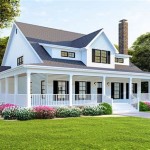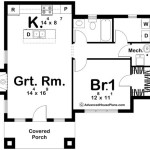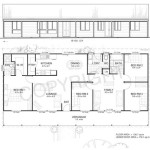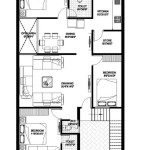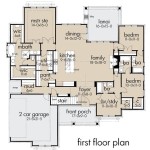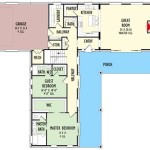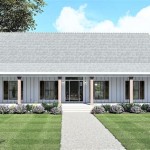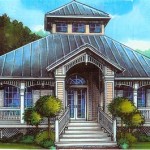6 Bedroom Mobile Home Floor Plans: Maximizing Space and Functionality
Six-bedroom mobile homes represent a significant departure from the standard mobile home floor plan, catering to large families, multigenerational households, or those seeking ample space for home offices, guest rooms, and hobby areas. Designing these homes requires careful consideration of spatial efficiency, structural integrity, and overall functionality. This article explores the key considerations and common features of six-bedroom mobile home floor plans, providing a comprehensive overview for individuals considering this housing option.
Understanding the Unique Challenges of 6-Bedroom Mobile Homes
Creating a six-bedroom mobile home involves navigating several unique challenges, primarily related to space constraints and structural limitations. Standard mobile home widths typically range from 14 to 18 feet, which necessitates careful layout planning to accommodate six bedrooms, living areas, kitchens, bathrooms, and circulation spaces. The structural engineering must account for the increased load and ensure the home complies with relevant building codes and safety standards.
One of the primary challenges is minimizing hallways and maximizing usable square footage. Long hallways consume valuable space that could otherwise be allocated to bedrooms or living areas. Therefore, designers often employ open-concept layouts and strategic bedroom placement to reduce the need for extensive corridors. Furthermore, careful consideration must be given to the placement of load-bearing walls to ensure structural stability while maintaining an efficient floor plan.
Another significant challenge is ensuring adequate natural light and ventilation in all bedrooms, particularly those located in the interior of the home. Optimizing window placement, incorporating skylights, and utilizing light wells can help to overcome this challenge. Ventilation systems must also be carefully designed to ensure proper airflow and prevent moisture buildup, particularly in areas with limited natural ventilation.
Finally, accessibility is a crucial consideration, particularly for multigenerational households or individuals with mobility limitations. Wider doorways, accessible bathrooms, and ramped entryways may be necessary to ensure that the home is accessible to all occupants. Integrating these features into the design requires careful planning and consideration of relevant accessibility standards.
Key Features and Common Layouts in 6-Bedroom Mobile Home Floor Plans
Despite the challenges, various floor plan approaches effectively address the needs of six-bedroom mobile homes. Common features include a master suite separated from the other bedrooms, often located at one end of the home to provide privacy. This master suite typically includes a private bathroom and walk-in closet.
The remaining five bedrooms are generally clustered together, often sharing one or two bathrooms. Bunk beds are frequently utilized in smaller bedrooms to maximize sleeping space. Alternately, some floor plans incorporate two master suites, allowing for two independent living areas within the home. This arrangement is particularly appealing to multigenerational families or those who desire separate guest accommodations.
The living area typically occupies a central location within the home, often integrated with the kitchen and dining area in an open-concept layout. This design promotes social interaction and maximizes the sense of spaciousness. The kitchen is typically equipped with ample counter space, storage cabinets, and modern appliances to accommodate the needs of a large household.
Storage is a critical consideration in six-bedroom mobile homes. Built-in storage solutions, such as shelving units and cabinets, are often incorporated into the bedroom and living areas to maximize space utilization. Additionally, many floor plans include a utility room or mudroom for laundry and additional storage.
Variations in layout often depend on the overall size and configuration of the mobile home. Some designs prioritize larger living areas, while others emphasize maximizing bedroom sizes. The choice ultimately depends on the individual needs and preferences of the homeowner.
Optimizing Space and Functionality: Design Considerations
Several key design considerations can significantly enhance the space and functionality of a six-bedroom mobile home. These considerations include the strategic use of vertical space, the incorporation of multi-functional furniture, and the implementation of effective zoning strategies.
Utilizing vertical space is crucial in mobile homes with limited square footage. Bunk beds, loft beds, and high shelving units can significantly increase storage capacity and sleeping space without consuming valuable floor area. Wall-mounted cabinets and floating shelves are also effective for maximizing storage in kitchens and bathrooms.
Multi-functional furniture can serve multiple purposes, further optimizing space utilization. Sofa beds, storage ottomans, and expandable dining tables are examples of furniture that can adapt to different needs and minimize clutter. These pieces are particularly useful in smaller bedrooms and living areas.
Effective zoning strategies can create a sense of privacy and separation within the home. Using furniture to delineate living spaces, incorporating partial walls, and varying flooring materials can help to define different areas. For example, a rug can visually separate the living room from the dining area, while a change in flooring material can distinguish the kitchen from the adjacent living space.
In addition to these design considerations, color schemes and lighting can also play a significant role in creating a sense of spaciousness. Light, neutral colors tend to make rooms feel larger and more open, while strategically placed lighting fixtures can brighten dark corners and enhance the overall ambiance of the home. Natural light should be maximized through the placement of large windows and skylights.
Furthermore, incorporating outdoor living spaces, such as decks or patios, can extend the usable living area and provide additional space for relaxation and entertainment. These outdoor spaces can be designed to complement the interior design of the home and create a seamless transition between indoor and outdoor living.
Finally, regular decluttering and organization are essential for maintaining a functional and comfortable living environment in a six-bedroom mobile home. Implementing storage solutions, establishing organizational systems, and regularly removing unwanted items can help to prevent clutter from accumulating and maximize the available space.
In conclusion, designing a six-bedroom mobile home requires careful planning, innovative design solutions, and a thorough understanding of the challenges and opportunities presented by limited space and structural constraints. By considering the key features, optimizing space utilization, and implementing effective design strategies, it is possible to create a functional, comfortable, and aesthetically pleasing living environment for large families or those seeking ample space in a mobile home setting. The emphasis should be on creating a harmonious balance between functionality, aesthetics, and affordability, ensuring that the home meets the diverse needs of its occupants.

6 Bedroom Mobile Homes Check More At Http S2pvintage Com 30999 Home Floor Plans House Modular

6 Bedroom Mobile Homes Check More At Http S2pvintage Com 30999 Home Floor Plans House Modular

Triple Wide Floor Plans Mobile Homes On Main

Triple Wide Mobile Home Floor Plans Manufactured Axsoris Com Modular

Kempton The Home Az

Triple Wide Floor Plans Mobile Homes On Main

Manufactured Home Floorplans And Modular Builder

Triple Wide Floor Plans Mobile Homes On Main

Modular Home Floor Plans Ranch House

Redbird 28 X 64 1494 Sqft Mobile Home Factory Expo Center

